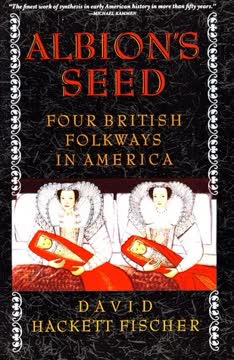Key Takeaways
1. America's diverse culture was seeded by four distinct British folk migrations.
Today less than 20 percent of the American population have any British ancestors at all. But in a cultural sense most Americans are Albion’s seed, no matter who their own forebears may have been.
Four distinct waves. From 1629 to 1775, the present-day United States was settled by at least four major waves of English-speaking immigrants, each originating from a specific region of Britain and carrying a unique set of folkways. These groups, though sharing a common language and legal heritage, differed significantly in religion, social rank, and historical generation. Their distinct cultures became the foundation of America's enduring regional diversity.
More than just genes. While the direct British ancestry of Americans has diminished over centuries of immigration, the cultural patterns established by these founding groups have proven remarkably persistent. These folkways, encompassing everything from speech and architecture to ideas about freedom and social order, were transmitted across generations and adopted by subsequent immigrant groups, making them a fundamental determinant of American identity.
A voluntary society's roots. The book seeks to explain the origins and stability of America's unique social system – democratic, capitalist, libertarian, individualist, and pluralistic. It argues that the interplay of these four distinct British cultural streams, each with its own conception of order, power, and freedom, created an expansive pluralism that is more libertarian than any single culture could have been, forming the bedrock of a voluntary society.
2. Puritans from East Anglia established a culture of ordered liberty in New England.
We shall be as a City upon a Hill, the eyes of all people are upon us.
A religious exodus. The first great migration (1629-1640) brought some 21,000 Puritans, primarily from the eastern counties of England (East Anglia), to Massachusetts Bay. Driven by a deep personal piety and a desire to build a "Bible Commonwealth" as a model for mankind, they traveled mostly in families, were of middling social rank, highly literate, and skilled artisans, not poor laborers.
Ordered liberty. Their culture was shaped by Calvinist beliefs (depravity, covenant, election, grace, love) and East Anglian traditions. They developed unique folkways: a nasal "Yankee twang," timber-framed "salt-box" houses, a "covenanted" family structure emphasizing age hierarchy and "will-breaking" child-rearing, civil marriage with divorce, and a "meeting and lecture" religious style. Their political ideal was "ordered liberty," emphasizing communal unity, strict laws, and collective self-governance through town meetings.
Persistent influence. Despite internal tensions and external challenges (like witchcraft fears and dissenters), this culture consolidated rapidly. Its emphasis on literacy, education (founding Harvard and public schools), and a strong work ethic (though condemning avarice) left a lasting imprint. The Puritan legacy of moral striving and communal order, though transformed, continues to echo in New England's regional identity.
3. Cavaliers and servants from southern England created a hierarchical society of hegemonic liberty in Virginia.
Virginia [was] the only city of refuge left in His Majesty’s Dominions, in those times, for distressed cavaliers.
Royalist refuge. The second great migration (ca. 1642-1675) saw a small Royalist elite and large numbers of indentured servants, mainly from the south and west of England, settle in Virginia. Led by figures like Sir William Berkeley, this movement was a refuge for those defeated in the English Civil War, seeking to recreate a hierarchical society based on Anglican faith and rural gentry ideals.
Hegemonic liberty. This culture was characterized by: a soft, slow "southern drawl," brick "great houses" and wooden "hall and parlor" homes, a patriarchal family structure emphasizing extended kin and age/gender hierarchy, indissoluble Anglican marriage, and a "devotional-liturgical" religious style. Their political ideal was "hegemonic liberty," emphasizing the right to rule, personal independence, and a hierarchical social order, often supported by the labor of others.
Stratified society. Virginia developed a deeply unequal society with a powerful gentry elite, a small middle class, and a large underclass of tenants, servants, and later, slaves. This stratification was reinforced by land distribution favoring large grants and inheritance customs emphasizing primogeniture. Despite a cultivated ideal of hospitality and honor, this culture also exhibited high rates of domestic strife and public violence.
4. Quakers from the North Midlands founded a pluralistic culture of reciprocal liberty in the Delaware Valley.
My friends, that are gone or are going over to plant and make outward plantations in America, keep your own plantations in your hearts.
A holy experiment. The third great migration (ca. 1675-1725) brought Quakers and other Protestant dissenters, primarily from the North Midlands of England and Wales, to the Delaware Valley (Pennsylvania, West Jersey, Delaware). Led by William Penn, they sought religious freedom and aimed to create a "holy experiment" based on Christian principles of peace, equality, and tolerance.
Reciprocal liberty. Their culture was shaped by Quaker beliefs (Inner Light, universal salvation, peace) and North Midland traditions (simplicity, plainness). They developed unique folkways: a "midland" dialect, stone "Quaker-plan" houses with pent roofs, a less hierarchical "family of love" emphasizing equality and "bracing the will" child-rearing, strict but consensual marriage, and a silent "spiritist" religious style. Their political ideal was "reciprocal liberty," emphasizing liberty of conscience, minimal government, and pluralism.
Egalitarian paradox. While promoting spiritual equality and religious tolerance, this culture also developed material inequalities, though less extreme than in Virginia. They favored literacy but not higher learning, were deeply philanthropic, and were the first major group to actively oppose slavery, based on the golden rule. Their legacy of pluralism and limited government profoundly shaped the American middle states.
5. Borderers from North Britain forged a fiercely independent culture of natural liberty in the Backcountry.
Whole neighborhoods formed parties for removal; so that departure from their native country is no longer exile.
Flight from the borders. The fourth great migration (1717-1775) brought over a quarter-million people from the borderlands of North Britain (Scottish lowlands, northern Ireland, northern England) to the American backcountry. Fleeing poverty, rack-renting landlords, and endemic violence, they came in family groups, seeking land and a better life, not religious or political ideals.
Natural liberty. Their culture was shaped by centuries of life in a violent, lawless border region. They developed unique folkways: a "southern highland" dialect with archaic forms and earthy vocabulary, impermanent "cabin and cowpen" architecture, a clan-based family structure emphasizing loyalty and "will-enhancing" child-rearing, wild marriage rituals often involving abduction, and a militant "field-meeting" religious style. Their political ideal was "natural liberty," emphasizing self-sovereignty, distrust of government, and the right to armed resistance.
Warrior culture. This culture was marked by extreme material inequality, a fierce sense of personal honor (valor), and a tradition of retributive justice (lex talionis). Violence was endemic, from feuds to rough-and-tumble fighting. Despite their poverty, they were fiercely proud and resistant to outside control, becoming a dominant force in the Appalachian highlands and the American southwest.
6. These four folkways differed profoundly across many aspects of life, from speech to social order.
Every major culture in the modern world has its own distinctive customs in these many areas.
Comprehensive differences. The four British folkways were not merely variations on a theme; they represented fundamentally different cultural systems that shaped nearly every aspect of life for their adherents. These differences were evident in:
- Speech: Nasal Yankee twang vs. soft Southern drawl vs. plain Midland speech vs. archaic Highland Southern dialect.
- Building: Timber-framed saltboxes vs. brick great houses vs. stone Quaker houses vs. log cabins.
- Family: Nuclear vs. patriarchal extended vs. family of love vs. clan.
- Marriage: Contractual vs. sacred union vs. loving agreement vs. abduction rituals.
- Gender: Spiritual equality vs. patriarchal hierarchy vs. help-meets vs. warrior/worker roles.
- Sex: Ascetic restraint vs. predatory male/breeding female vs. prudish asceticism vs. sensual openness.
- Child-rearing: Will-breaking vs. will-bending vs. will-bracing vs. will-enhancing.
- Age: Elder-saint veneration vs. elder-patriarch seniority vs. nursing fathers/mothers vs. thanistry.
- Death: Cultivated angst vs. stoic fatalism vs. optimistic fatalism vs. nescient fatalism.
- Religion: Meeting/lecture vs. devotional/liturgical vs. spiritist vs. field-meeting.
- Magic: Witchcraft obsession vs. fortune obsession vs. spiritualism vs. experimental sorcery.
- Learning: High literacy/higher education vs. hierarchical literacy/elite education vs. moderate literacy/practical education vs. low literacy/oral tradition.
- Work: Ordered industry vs. ambivalent leisure vs. worldly asceticism vs. warrior ethic.
- Time: Improving time vs. killing time vs. redeeming time vs. passing time.
- Wealth: Moderate equality vs. extreme inequality vs. egalitarian paradox vs. extreme inequality.
- Rank: Truncated orders vs. extended orders vs. single order vs. stratification without orders.
- Comity: Town-based vs. neighborhood/county vs. pluralistic neighborhood vs. clan/isolated.
- Order: Unity vs. hierarchy vs. peace vs. lex talionis.
- Power: Town meeting vs. court/vestry vs. commission vs. personal government.
- Freedom: Ordered vs. hegemonic vs. reciprocal vs. natural.
A tapestry of differences. These distinctions were not isolated traits but interconnected elements forming coherent cultural systems. They shaped daily life, social interactions, and collective identity in ways that made a New England Puritan fundamentally different from a Virginia Cavalier, a Pennsylvania Quaker, or a Backcountry Borderer.
Beyond simple labels. While simplified labels like "Puritan" or "Cavalier" capture some essence, the true depth of these cultural differences lies in the specific, often contradictory, folkways practiced by ordinary people in these regions. Understanding these detailed differences is crucial to grasping the complexity of early American society.
7. The American environment modified, but did not erase, these transplanted British cultures.
Geography... must now find work for a Christianography.
Environment as a filter. The diverse American environments encountered by the four groups did not simply overwrite their British cultures. Instead, the environment acted as a filter, modifying certain practices while reinforcing others, often in ways that aligned with the existing cultural predispositions of the settlers.
Regional adaptations:
- New England: Cold climate reinforced Puritan ambivalence towards slavery, rocky soil encouraged town settlement.
- Chesapeake: Warm, watery environment supported staple agriculture and encouraged dispersed settlement, high mortality among Europeans contributed to the rise of African slavery.
- Delaware Valley: Temperate climate and fertile land were well-suited to Quaker ideals of industrious farming and commerce, friendly natives facilitated peaceful relations.
- Backcountry: Rugged terrain and hostile natives reinforced the borderers' warrior ethic and preference for scattered, defensible settlements.
Culture shaped environment. The relationship was not one-sided. The settlers also actively shaped their environments according to their cultural values. Puritans built towns on a grid, Virginians cleared forests for plantations, Quakers cultivated gardens and built stone houses, and borderers adapted log cabin architecture. The resulting landscapes became physical manifestations of their distinct cultures.
By interacting with specific environmental conditions, the transplanted British folkways were adapted and solidified, creating unique regional cultures that were neither purely British nor simply products of the frontier.
8. Regional cultures persisted and expanded, shaping the nation's political landscape for centuries.
Independence did not mark the end of the four British folkways in America, or of the regional cultures which they inspired. The history of the United States is, in many ways the story of their continuing interaction.
Expansion and diffusion. After the initial settlements, each of the four cultures expanded geographically, carrying their folkways into new territories. New Englanders moved west and north, Virginians south and west, Quakers west through the midlands, and borderers south and west along the Appalachian chain and beyond. These migrations created broad cultural regions across the continent.
Political influence. These regional cultures became powerful determinants of American political behavior. From the Constitutional Convention to the Civil War and beyond, voting patterns, party alignments, and major political conflicts often reflected the underlying differences between these cultural blocs. The "solid South," the "Republican North," and the swing states of the "midlands" were manifestations of this regional influence.
Enduring legacy. Even as the nation grew and diversified with new waves of immigration, the core cultural patterns established by the four British groups remained influential. New immigrant groups often adopted the folkways of the region where they settled, perpetuating the regional character. This persistence of regionalism continues to shape American identity and politics today, visible in everything from dialect maps to voting behavior.
9. The interaction and conflict of these distinct freedom traditions define American liberty.
The most important fact about American liberty is that it has never been a single idea, but a set of different and even contrary traditions in creative tension with one another.
Four ideas of freedom. The four regional cultures brought with them four distinct, often conflicting, conceptions of liberty:
- Ordered Liberty (New England): Freedom found in submission to God's will and communal order.
- Hegemonic Liberty (Virginia): Freedom as the right to rule oneself and others, often based on social hierarchy.
- Reciprocal Liberty (Delaware Valley): Freedom based on the Golden Rule, extending rights equally to others.
- Natural Liberty (Backcountry): Freedom as individual autonomy and distrust of external authority.
Creative tension. These traditions, though initially limited and sometimes contradictory (e.g., hegemonic liberty coexisting with slavery), were brought into a single political system by the U.S. Constitution. The Constitution and subsequent political development became a process of negotiating and compromising between these different ideas of freedom.
An expansive pluralism. The ongoing tension and interaction between these four libertarian traditions have prevented any single definition of freedom from dominating American life. This dynamic pluralism has fostered a culture of liberty that is more open, adaptable, and expansive than any one tradition could have achieved alone, becoming a defining characteristic of the American experience.
Last updated:
FAQ
1. What is Albion’s Seed: Four British Folkways in America by David Hackett Fischer about?
- Cultural origins of America: The book traces the roots of American regional cultures to four major British folk migrations between 1629 and 1775, each bringing distinct customs, dialects, and social structures.
- Four British folkways: Fischer identifies Puritans from East Anglia, Cavaliers from southern and western England, Quakers from the North Midlands, and Borderers from the Anglo-Scottish border as the foundational groups.
- Cultural persistence: The book argues that these folkways created enduring regional cultures whose values, institutions, and ideas of liberty still shape American society.
- Methodological approach: Fischer uses a blend of historical records, demographic data, linguistic analysis, and cultural anthropology to reconstruct and analyze these folkways.
2. Why should I read Albion’s Seed by David Hackett Fischer?
- Understanding American regionalism: The book provides a deep explanation for the origins of American diversity, showing how British folkways explain persistent regional differences in culture, politics, and identity.
- Rich historical detail: Fischer’s research draws on primary sources like wills, court records, and letters, offering vivid insights into early American life and the continuity of English traditions.
- Relevance to modern America: By linking contemporary cultural and political patterns to their British roots, the book helps readers understand ongoing regional conflicts and attitudes.
- Interdisciplinary value: The book is valuable for historians, sociologists, linguists, and anyone interested in the roots of American society.
3. What are the four British folkways described in Albion’s Seed and what are their main characteristics?
- New England Puritans: Emphasized ordered liberty, religious conformity, education, and communal governance, shaping New England’s moralistic and participatory culture.
- Virginia Cavaliers: Brought a hierarchical, honor-based society with Anglican faith, plantation aristocracy, and a culture of hegemonic liberty to the South.
- Delaware Valley Quakers: Advocated reciprocal liberty, religious tolerance, pacifism, and egalitarian social relations, influencing the Middle Colonies’ pluralism.
- North British Borderers: Valued natural liberty, clan loyalty, martial spirit, and resistance to authority, shaping the backcountry and Appalachian regions.
4. How does David Hackett Fischer define “folkways” in Albion’s Seed and why are they important?
- Normative cultural structures: Folkways are the values, customs, and meanings that shape everyday life, including speech, family, religion, work, and social order.
- Persistent but adaptable: Unlike static or biological traits, folkways are socially created, maintained by elites, and can adapt over time while preserving core elements.
- Transmission of culture: Folkways explain how regional cultures persist across generations, even as populations change, by transmitting values and social structures.
- Key to American diversity: Understanding folkways is essential to explaining why American regions remain distinct in culture and identity.
5. What are the key takeaways from Albion’s Seed by David Hackett Fischer?
- Enduring regional cultures: The four British folkways established distinct regional cultures that have persisted and shaped American society for centuries.
- Multiple ideas of liberty: Each folkway brought a different concept of liberty—ordered, hegemonic, reciprocal, and natural—creating a pluralistic American freedom.
- Cultural roots of conflict: Many American political and social conflicts stem from these deep-seated cultural differences rather than just economic or geographic factors.
- Cultural persistence mechanisms: Institutions, elites, and social practices have maintained these folkways, explaining the longevity of regional identities.
6. How did the Puritan folkway from East Anglia shape New England’s culture according to Albion’s Seed?
- Religious and social order: Puritans established covenanted communities with strict moral codes, participatory town meetings, and a focus on education and literacy.
- Family and marriage: Emphasized nuclear families, mutual obligations, and marriage as a civil contract, with gender roles defined by both hierarchy and respect.
- Work and time ethic: Valued serving God through vocation, rigorous scheduling, and a strong work ethic, while discouraging idleness and ostentatious wealth.
- Ordered liberty: Developed a concept of liberty as collective and individual freedom within a disciplined, covenantal community.
7. What were the main features of the Virginia Cavalier folkway and its impact on Southern culture in Albion’s Seed?
- Hierarchical society: Cavaliers transplanted a gentry-based, aristocratic order with strong social stratification and deference to elites.
- Honor and family: Emphasized extended kinship, family reputation, and a culture of honor, with patriarchal authority and arranged marriages.
- Anglican religious conformity: Maintained Anglican rituals and church hierarchy, reinforcing social order and elite status.
- Hegemonic liberty: Defined liberty as the power to rule over oneself and others, justifying social hierarchy and, later, race slavery.
8. How did the Quaker folkway from the North Midlands influence the Delaware Valley and American pluralism in Albion’s Seed?
- Egalitarian beliefs: Quakers promoted spiritual equality, pacifism, and liberty of conscience, rejecting formal clergy and hierarchical authority.
- Pluralistic society: Welcomed diverse ethnic and religious groups, fostering a culture of tolerance and principled pluralism in the Delaware Valley.
- Family and gender roles: Practiced egalitarian family relations, allowed women significant roles, and emphasized love and mutual support in marriage.
- Reciprocal liberty: Advocated liberty for all, including religious freedom and early antislavery activism, shaping American ideals of pluralism.
9. What are the defining traits of the North British Borderer (backcountry) folkway in Albion’s Seed?
- Warrior ethic and clan loyalty: Shaped by centuries of border conflict, the culture prized courage, honor, and extended kinship networks.
- Natural liberty: Valued individual autonomy, minimal government, and resistance to external authority, often settling disputes through retributive justice.
- Distinctive speech and customs: Maintained unique dialects, log cabin architecture, and folk magic, adapting British border traditions to the American backcountry.
- Religious diversity: Predominantly Presbyterian and evangelical, with emotional, revivalist religious practices and hostility to established churches.
10. How does Albion’s Seed explain the persistence of British folkways in American language, customs, and institutions?
- Linguistic continuity: Regional American dialects and vocabulary can be traced to specific British regions, with many archaic words and pronunciations surviving in America.
- Material culture: Building styles, foodways, and social rituals in American regions mirror those of their British origins, showing strong cultural transmission.
- Institutional reinforcement: Town meetings, parish vestries, and kin-based communities maintained folkways through local governance and social practices.
- Demographic stability: High persistence rates in settlement patterns and family structures helped preserve folk traditions across generations.
11. How did the four British folkways shape American ideas of liberty and political culture according to Albion’s Seed?
- Distinct liberty traditions: Each folkway contributed a unique idea of liberty—ordered (New England), hegemonic (Virginia), reciprocal (Delaware Valley), and natural (Backcountry).
- Constitutional compromises: The U.S. Constitution reflects compromises between these regional cultures, not just between states or ideologies.
- Political coalitions: Regional cultures shaped political alliances, party systems, and presidential leadership throughout American history.
- Creative tension: The coexistence of these liberty traditions has produced a dynamic, pluralistic culture of freedom in America.
12. What are the best quotes from Albion’s Seed by David Hackett Fischer and what do they mean?
- On cultural history: “History is culturally ordered, differently so in different societies … The converse is also true: cultural schemes are historically ordered.” (Emphasizes the book’s cultural-historical approach.)
- On American liberty: “The most important fact about American liberty is that it has never been a single idea, but a set of different and even contrary traditions in creative tension with one another.” (Highlights the pluralistic nature of American freedom.)
- On regional compromise: “Several generations of political scientists have misled us into thinking that the ‘great compromise’ was mainly intended to mediate between large states and little ones. But the more serious task was to reconcile different political cultures in the four regions of British America.” (Shows the cultural basis of the Constitution.)
- On honor culture: “Honor was not merely a noun but a verb in these cultures.” (Underscores the active, lived nature of honor in Southern and Borderer societies.)
Review Summary
Albion's Seed is a comprehensive exploration of four British folkways that shaped American culture. Readers praise Fischer's thorough research, fascinating insights, and ability to connect historical patterns to modern-day regional differences. The book is lauded for its detailed examination of cultural aspects like speech, religion, and social structures. While some find it dense, most consider it an invaluable resource for understanding American history and society. Critics note occasional overgeneralizations and structural issues, but overall, it's highly regarded as a seminal work in American cultural history.
America: A Cultural History Series
Similar Books
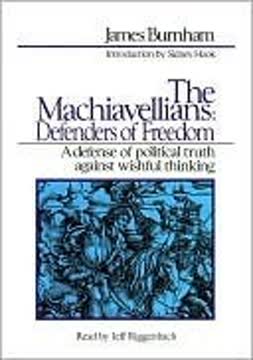
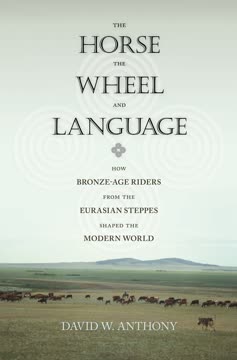


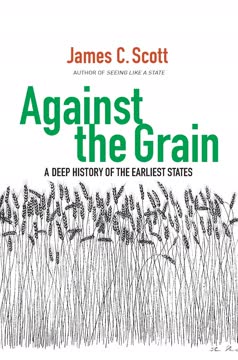
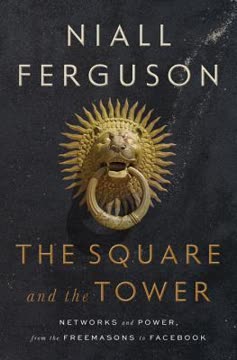

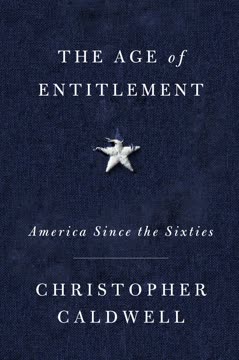
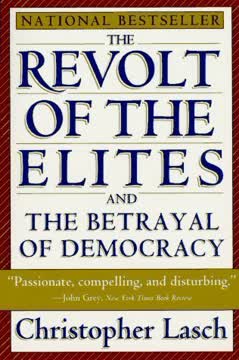
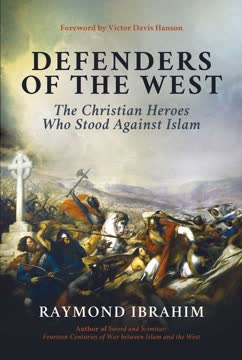
Download PDF
Download EPUB
.epub digital book format is ideal for reading ebooks on phones, tablets, and e-readers.
